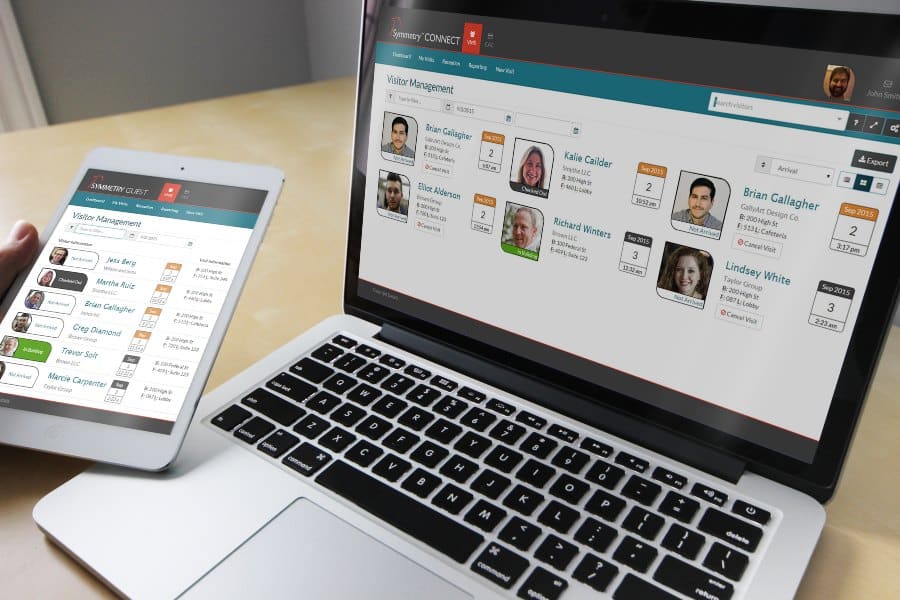Transforming security operations using the data trifecta


James Thorpe
Share this content
Kim Rahfaldt, Director of Marketing and Public Relations, AMAG Technology looks at how PSIM, PIAM and analytics is redefining security operations.
In the ever-evolving landscape of security operations, the integration of advanced technologies can enhance a team’s ability to secure an organisation.
Among the traditional pillars of security like access control and video surveillance, the integration of physical security information management (PSIM) systems, physical identity and access management (PIAM) systems and analytics emerge as game changers.
These innovations don’t just enhance security measures; they completely change how an organisation protects its people, property and assets.
Article Chapters
ToggleUnderstanding PSIM and PIAM
PSIM is a comprehensive software platform that amalgamates data from various security subsystems, including cameras, access control, alarms and sensors.
It provides a centralised hub for real time monitoring, enabling security teams to detect anomalies, suspicious activities or potential breaches.
Immediate alerts elicit proactive responses to emerging threats, fostering improved situational awareness.
PSIMs are not new to the market, however, advancements in technology have driven their costs down, making something once cost-prohibitive much more accessible.
PIAM, on the other hand, focuses on managing user identities and access permissions within an organisation. It enables meticulous control over who can access different areas of a building.
Companies that align business goals with security goals use PIAM systems to coordinate synergies and streamline processes.
Implementing the right technologies automates cumbersome manual processes, meets strict audit and compliance requirements and reduces operating costs.
Leveraging technologies like facial recognition and biometrics, PIAM amplifies access control measures, strengthening authentication and reducing unauthorised access attempts.
Optimising security operations through analytics
The integration of analytics is the catalyst that optimises security measures within an organisation and helps identify the employees, contractors and other identities that may pose the highest risk.
By analysing access data history and discerning current patterns and trends, analytics platforms can flag anomalous behaviour and identify potential threats, attempted access or other breaches, empowering teams to adjust protocols or deploy additional resources to prevent such occurrences.
In addition, collaboration with cross-functional teams, such as HR, becomes instrumental. Insights from HR data could flag high risk situations, like resignations or reprimands, aiding in identifying potential threats such as data thefts that might otherwise go unnoticed.
Elevating security operations through integration
The integration of PSIM, PIAM and analytics systems is the foundation for real time monitoring, threat prediction, incident response, data correlation and resource optimisation.
Let’s look at the impact of these integrated technologies:
Real time monitoring and alerts – data from disparate security systems, ranging from surveillance cameras to access control systems, alarms and sensors, seamlessly aggregates into a single centralised platform. This convergence creates a holistic view of the security landscape within an organization. Each subsystem contributes a piece to the puzzle, forming a comprehensive picture of the environment in real time.
Algorithms and analytical tools sift through the incoming information. These tools detect patterns, irregularities or deviations from normal behaviours. Upon detecting irregularities, the system triggers immediate alerts to personnel. These alerts are tailored to the type and severity of the anomaly. Real time monitoring provides security teams with the agility to respond quickly. Immediate alerts allow personnel to respond promptly to emerging threats, improving an organisation’s security.
Access control – managing user identities and access permissions is more complex with these integrated systems and security teams can maintain strict control over who can enter different areas of a building. By incorporating facial recognition and biometric data, access control becomes more robust. The cross-referencing of access control data via an analytics system is instrumental in swiftly identifying and stopping unauthorised access attempts.
Proactive threat prevention – analysing historical data and current trends helps identify potential security threats. Identifying patterns of security breaches facilitates proactive measures to prevent such occurrences. For example, understanding the time of day when more thefts occur means you can increase patrols or staffing, limit access during those hours, upgrade surveillance and better train and educate employees on security protocols.
Streamlined incident response – a centralised view of all available data streamlines incident response, empowering security personnel to make informed decisions swiftly. Effective incident classification and prioritisation ensures optimal resource allocation during critical moments.
Unveiling insights – the aggregation of data from PSIM, PIAM and analytics provides invaluable insights into security trends and vulnerabilities. Each source contributes distinct perspectives from real time security events to user access logs and analytical insights. As the data amalgamates, patterns, trends and correlations start to emerge and the system can identify recurring security incidents, potential vulnerabilities or areas of concern. For instance, it might highlight patterns of attempted breaches or vulnerabilities in certain locations.
Understanding this, security teams can refine protocols, tweak access control measures or increase monitoring in identified vulnerable areas. In addition, by knowing which areas or systems are more prone to incidents, teams can allocate resources. This might involve deploying additional personnel or enhancing surveillance in high risk zones while optimising resources in low risk areas.
Understanding the granularity or specific areas of interest within the aggregated data could also be beneficial. Are there particular trends or vulnerabilities that have been a focus of analysis? Have any protocols or strategies been revamped based on these insights? These details would help paint a more vivid picture of how data correlation drives actionable intelligence within your operations.
Optimising resources for maximum impact – analytics delve deep into data to optimise the allocation of security personnel and resources, ensuring that high risk areas receive adequate attention. This not only fosters cost savings but also bolsters overall security measures.
Compliance and reporting – integrated systems ensure compliance with stringent security regulations and generate comprehensive reports essential for audits. For industries operating under strict regulations like finance, healthcare, data centres and utilities, compliance isn’t just a preference; it’s a mandate.
These integrated systems provide comprehensive and detailed reports essential for audits. The ability to collate data from various security subsystems and compile it into coherent and easily accessible formats is invaluable during audits. It allows auditors to review security measures thoroughly.
The impact of compliance and reporting goes beyond regulatory adherence, however. Passing audits seamlessly and demonstrating compliance avoids costly penalties. The potential savings, often amounting to thousands or even millions of dollars annually, stem from avoiding fines, legal fees, damage to reputation and potential loss of business due to non-compliance.
Remote monitoring and control – enabling remote monitoring and control augments the responsiveness and flexibility of security operations. This feature equips teams to swiftly adapt and counter security threats, regardless of their physical location.
Empowering organisations
The convergence of PSIM, PIAM and analytics empowers organisations to respond adeptly to threats, continually refine strategies and bolster customer retention.
Integrating these technologies isn’t just an enhancement; it’s a necessity.
And now, it’s become more affordable to implement.
As the industry continues to evolve, the fusion of innovation, collaboration and data-driven strategies will remain the cornerstone of effective security operations.


